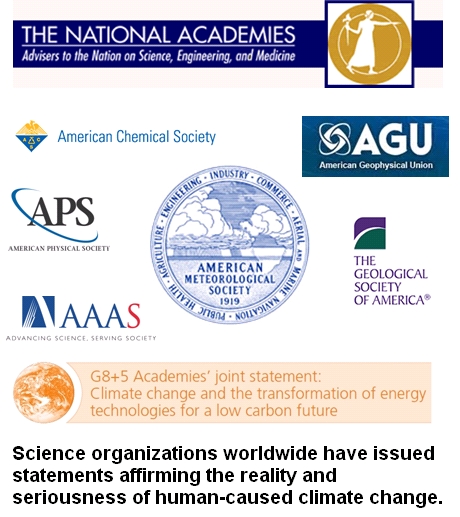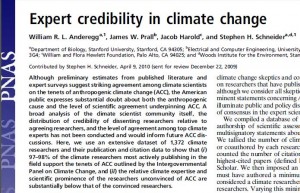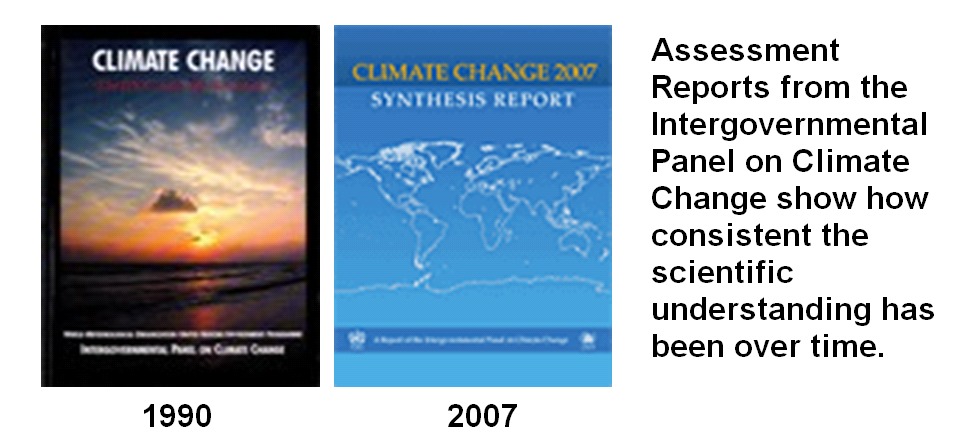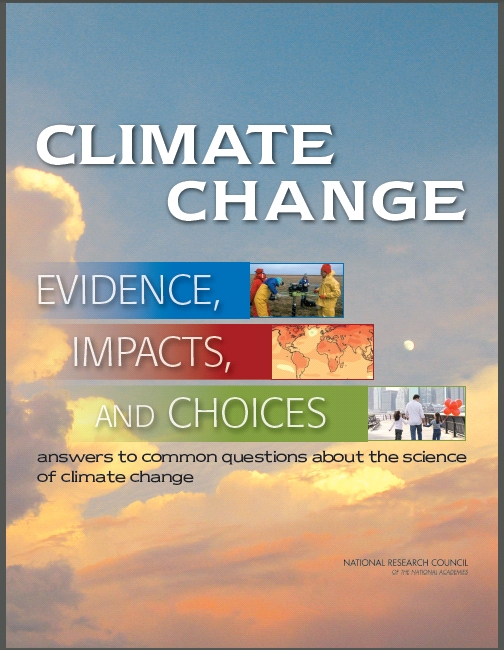Citizen’s Guides to Climate Change: How to Sort it All Out without Getting a PhD
Scientists are telling us clearly that we’re changing the climate and need to do something about it. Yet, what we hear in the media can be so confused that many people feel they can never figure out what to think about climate change. If you feel that way, this posting is the second in a series on how you can get to the truth about the climate.
My first post showed how y ou can get started by finding out what actual scientists are saying, rather than trying to puzzle out the Al-Gore/talk-radio argument that the media sometimes make climate science seem to be. A good next step is to appreciate just how strongly and consistently scientists agree on the essential facts of climate change.
ou can get started by finding out what actual scientists are saying, rather than trying to puzzle out the Al-Gore/talk-radio argument that the media sometimes make climate science seem to be. A good next step is to appreciate just how strongly and consistently scientists agree on the essential facts of climate change.
One expression of that consensus is in the statements on climate change by science organizations all over the world. Those organizations include the national science academies of at least 32 countries (links: 1,2,3,4,5). They include professional organizations in earth sciences (6,7,8,9,10), meteorology (11,12,13,14,15), physics, chemistry and biology. They also include the National Academy of Sciences, America’s foremost science advisory board, whose members serve without pay and are elected for distinguished achievement. These statements all affirm certain basic facts: The climate is changing. It is virtually certain that we are causing it. We need to burn less fossil fuel, to stop heat-trapping gases such as carbon dioxide from accumulating in our atmosphere.
 A 2010 article in the Proceedings of the National Academy of Sciences took another approach to sizing up the scientific consensus: They counted. The authors identified the community of scientists who are most actively working on climate change, based on the number of peer-reviewed scientific papers each scientist had published, and how often those papers had been cited by others in the field. They looked at all the papers that those scientists had published. They then counted up how many of the scientists supported or challenged the basic understanding of human-caused climate change summarized in the Assessment Reports of the Intergovernmental Panel on Climate Change. They found that 97 to 98 percent of the scientists actually working on climate change supported that common scientific understanding. Other studies have found similar results. That nearly unanimous agreement among climate specialists, together with the supporting statements by national academies and professional organizations in related areas of science, indicates that scientists are in overwhelming agreement about the reality, human causes and urgency of climate change.
A 2010 article in the Proceedings of the National Academy of Sciences took another approach to sizing up the scientific consensus: They counted. The authors identified the community of scientists who are most actively working on climate change, based on the number of peer-reviewed scientific papers each scientist had published, and how often those papers had been cited by others in the field. They looked at all the papers that those scientists had published. They then counted up how many of the scientists supported or challenged the basic understanding of human-caused climate change summarized in the Assessment Reports of the Intergovernmental Panel on Climate Change. They found that 97 to 98 percent of the scientists actually working on climate change supported that common scientific understanding. Other studies have found similar results. That nearly unanimous agreement among climate specialists, together with the supporting statements by national academies and professional organizations in related areas of science, indicates that scientists are in overwhelming agreement about the reality, human causes and urgency of climate change.
 Another measure of how well settled the science of climate change is, is how consistent the scientists’ understanding has been over time. You can see that consistency in the very first Assessment Report of the Intergovernmental Panel on Climate Change. In that 1990 report, scientists reviewed the research up to that time, and summarized what we knew then about climate change. They identified most of the key points that you can see in the most recent Assessment Report from 2007. To list just a few of the biggest ones:
Another measure of how well settled the science of climate change is, is how consistent the scientists’ understanding has been over time. You can see that consistency in the very first Assessment Report of the Intergovernmental Panel on Climate Change. In that 1990 report, scientists reviewed the research up to that time, and summarized what we knew then about climate change. They identified most of the key points that you can see in the most recent Assessment Report from 2007. To list just a few of the biggest ones:
- Global warming happens because we are accumulating carbon dioxide and other heat-trapping gases in the atmosphere, mostly by burning fossil fuels such as coal and oil.
- We know the warming will happen both from the physics of the climate system and from geologic records that tell us about past climates.
- The details of how the climate changes depend on the behavior of clouds, snow, ice, water vapor, winds and ocean currents, which affect and are affected by the warming.
- We can see the warming trend in records from weather stations, satellites, balloons, buoys and other tools that measure land, sea and atmospheric temperatures, as well as sea level rise and the retreat of glaciers.
That warming trend was measurable by 1990, though the data weren’t yet strong enough to rule out natural fluctuations as the cause. By 2007, the trend was unmistakable, and the scientists estimated that there was less than a ten-percent chance that anything other than human causes could explain all their measurements of trends in different aspects of the climate. The main change in the science was that the understanding had gotten clearer, a few apparent anomalies had been resolved, and the evidence supporting the basic model had become even more massive.
 These few sentences don’t nearly do justice to the amount of evidence that supports the scientific consensus. Indeed, one of the remarkable things about global-warming science is the sheer number of different ways in which the scientists have checked and cross-checked their understanding. The National Research Council, an agency associated with the National Academy of Sciences, has a 40-page booklet that summarizes some of the many lines of evidence in language that non-scientists can understand. I hope to show you a few examples in future postings.
These few sentences don’t nearly do justice to the amount of evidence that supports the scientific consensus. Indeed, one of the remarkable things about global-warming science is the sheer number of different ways in which the scientists have checked and cross-checked their understanding. The National Research Council, an agency associated with the National Academy of Sciences, has a 40-page booklet that summarizes some of the many lines of evidence in language that non-scientists can understand. I hope to show you a few examples in future postings.
This posting’s bottom line is simple but crucial: You might not hear it on TV, but scientists have reached an overwhelming consensus that climate change is real, happening now, human-caused, and a problem we urgently need to deal with. Knowing that matters because, once people hear how strong the scientific agreement is, they are much more likely to agree that climate action now is one of our highest priorities.
 This material by William F. Avrin is used here by permission of the author, and is licensed under a Creative Commons Attribution-NonCommercial-ShareAlike 3.0 Unported License.
This material by William F. Avrin is used here by permission of the author, and is licensed under a Creative Commons Attribution-NonCommercial-ShareAlike 3.0 Unported License.

2 Responses
Well written Bill!